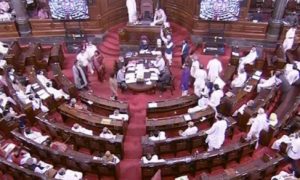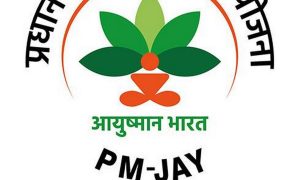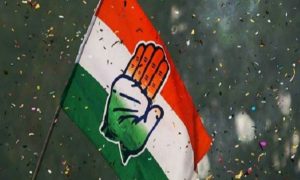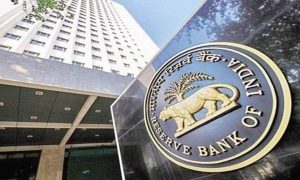The RBI has retained the policy stance as the ‘withdrawal of accommodation’ in a 5:1 majority decision on Friday. Here’s why.
Interest rates on home, vehicle, personal and other loans in the banking system will remain unchanged with the Monetary Policy Committee (MPC) of the Reserve Bank of India keeping the Repo rate unchanged at 6.5 per cent in its monetary policy review amid rising risks to inflation due to the recent spike in vegetable prices. The central bank also retained the stance of the monetary policy as ‘withdrawal of accommodation’.
Read More:-Guide To Reduce The Chances Of Rejected Car Insurance Claim
With better-than-expected second-quarter gross domestic product (GDP) print at 7.6 per cent, the RBI has also revised its growth estimate upwards to 7 per cent from 6.5 per cent for FY 2024. The inflation estimate for the fiscal remained unchanged at 5.4 per cent.
What will happen to lending, deposit rates?
Interest rates on loans and deposits are set to remain unchanged as of now. Certain segments of the retail loans are expected to cost more as the RBI recently hiked the risk weights on retail loans. Some banks had recently raised the savings bank deposit rate in certain segments.
All external benchmark lending rates that are linked to the repo rate will not rise. It will provide some relief to borrowers as their equated monthly instalments (EMIs) will not increase.
Banks have revised their repo-linked external benchmark-based lending rates (EBLRs) upward by the same magnitude in response to the cumulative 250 bps hike in policy rate since May 2022. The one-year median marginal cost of funds-based lending rate (MCLR) increased by 152 bps during May 2022 to October 2023.
The weighted average lending rates (WALRs) on fresh and outstanding loans of banks increased by 187 bps and 111 bps, respectively, during May 2022 – September 2023. On the deposit side, the weighted average domestic term deposit rates (WADTDRs) on fresh and outstanding rupee deposits increased by 229 bps and 166 bps, respectively.
Read More: India’s Economy To Grow At 6.8% In Current Fiscal: CII
Why has RBI kept the repo rate unchanged?
The six-member rate-setting panel of the RBI, headed by Governor Shaktikanta Das ,has decided not to tinker with the Repo rate – the rate at which RBI lends money to banks to meet their short-term funding needs – to manage and balance the retail inflation and growth.
“The reason is that the inflation will start inching up because food inflation is going to increase. We have seen onion and tomato prices going up again. So, there is no case for even thinking of lowering the repo rate. At the same time, core inflation is around 4 per cent, and therefore, there is no reason for the RBI to increase the rate,” said Madan Sabnavis, chief economist, Bank of Baroda. Consumer price-based inflation (CPI) eased to 4.87 per cent in October from 5.02 per cent in September. The retail inflation, however, continues to remain above the 4 per cent target of the RBI.
Read More: Forex Update: India’s Foreign Exchange Reserves Cross $600 Billion Mark After 4 Months
Last month, RBI Governor Shaktikanata Das said that though headline inflation has moderated, it remains vulnerable to recurring and overlapping food price shocks coming from global factors and adverse weather events. In such a scenario, the monetary policy needs to remain watchful and actively disinflationary while supporting growth. “We are completely focused on the 4 per cent target. We maintain Arjuna’s eye on the inflation target (of 4 percent),” he had said.
In the latest review, Das said the near-term inflation outlook is “masked” by risks to food inflation, which may lead to an uptick in November and December. “This needs to be watched for second-round effects, if any,” he said. There has been broad-based easing in core inflation, which is indicative of successful disinflation through monetary policy actions, he added.
Read More:-Sainik School Employees To Receive Pensions On Time With New MoA Agreement: Here’s All Details
This is the fifth monetary policy on the trot when the MPC has kept the repo rate unchanged at 6.5 per cent. Last time, the repo rate was raised from 6.25 per cent to 6.5 per cent in February 2023. Between May 2022 and February 2023, the policy rate was raised by 250 basis points (bps). One basis point is one-hundredth of a percentage point.
Why is there no change in the MPC’s policy stance?
The RBI has retained the policy stance as the ‘withdrawal of accommodation’ in a 5:1 majority decision on Friday. “In the last policy, the RBI stated that the transmission of (250 bps hike in) the repo rate has not happened. If you look at the weighted average lending rates and deposit rates of banks, there is still a 50 bps in the lending rates. Therefore, the stance will continue to be ‘withdrawal of accommodation’,” Sabnavis said.
Read More: India to move to T+0 for market settlement before FY24-end: Sebi chief
“The RBI is expected to maintain the system liquidity at a slightly deficit level to ensure better transmission of interest rates and this has been in evidence in the month of November. With higher govt. bond redemptions scheduled in the current month and also the likelihood of higher FPI flows, the RBI may consider the deployment of tools like OMO to suck up additional liquidity from the market,” said Suman Chowdhury, Chief Economist and Head – Research, Acuité Ratings & Research.
GDP projections revised
With the second quarter GDP growth overshooting its estimate of 6.5 per cent, the RBI has revised its FY2024 growth forecast from 6.5 per cent to 7 per cent. The RBI has retained the headline inflation forecast at 5.4 per cent for the current fiscal.
Read More: Bombay High Court To Be Renamed As ‘Mumbai High Court’
GDP growth in the second quarter of the year has been significantly higher than market and RBI’s forecasts at 7.6 per cent, translating to a robust growth of 7.7 per cent in the first half of FY24. “We expect a moderation in growth in the second half of the year given the impact of El Nino on rainfall in the current year and its consequent effect on agricultural output and rural demand. Some of the high-frequency indicators, such as two-wheeler and FMCG sales as well as higher demand for MGNREGS, reflect a weakness in rural incomes,” Chowdhury said.
The shortfall in agricultural output and uncertain weather conditions can also lead to potential upside risks to the headline inflation which had moderated to 4.9 per cent in October 2023. With continuing firmness in prices of rice and pulses, food inflation can face upside pressures in a season which is typically conducive for food prices.





































